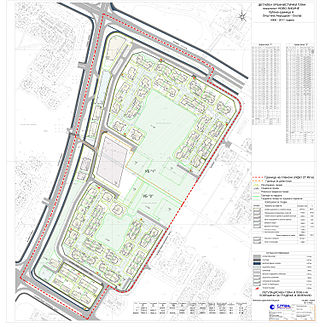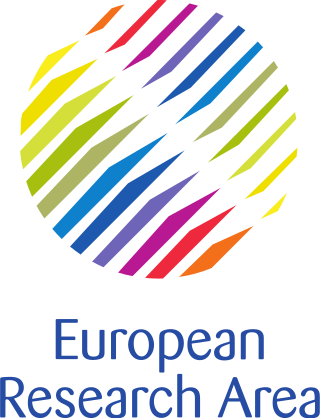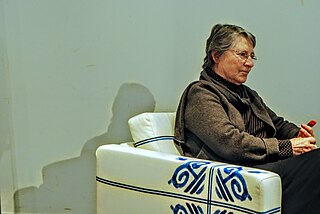| Authors | Alfonso Vegara (team leader) |
|---|---|
| Language | Spanish / English |
| Subject | Strategic planning |
| Genre | non-fiction |
| Publisher | Alicante Provincial Council, CAM |
Publication date | January 2009 |
| Publication place | Spain, E.U. |
| Media type | Paperback |
| Pages | 392 |
Alicante Innovation + Territory is a strategic plan for the Province of Alicante, Spain (Southern Europe).
It initiated from the collaboration agreement signed in 2007 by Alicante Provincial Council (Diputación Provincial de Alicante) and the savings bank CAM -as strategic partners- with the Foundation Metrópoli -knowledge partner-. [1]
A team led by the president of Metropoli Foundation, [2] the architect Alfonso Vegara, [3] who was President of ISOCARP (2002–05) and received the "European City and Regional Planning Award" of ECTP-CEU in 2006, conducted an analytical report that contains a wide range of solutions for the Province of Alicante. They were inspired in the philosophy of the "Smart Places" [4] and as result of a selection of its proposals Province of Alicante Innovation + Territory Programme was released, financed and offered to the civil society by the strategic partners for free.
Alicante I+T Programme is based in the "European Spatial Development Perspective" [5] and the European Commission's Communication "Putting knowledge into practice: a broad-based innovation strategy for the EU” [6] to the Council, the Parliament, the Economic and Social Committee, and the Committee of the Regions, as well as the "Europe Innova Initiative" [7] under the 6th Framework Programme.
In April 2009 a group of representatives of the Architectural Association in London visited Alicante in order to understand the programme Alicante Innovation + Territory.
This project was promoted from Suma Gestión Tributaria, which is the public provincial body that manages mainly property tax and cartography, forming part of Alicante Provincial Council during 2010. Nowadays, finished its promotion, Alicante Innovation + Territory is in the area of Local Development of that Provincial Council.

Spatial planning mediates between the respective claims on space of the state, market, and community. In so doing, three different mechanisms of involving stakeholders, integrating sectoral policies and promoting development projects mark the three schools of transformative strategy formulation, innovation action and performance in spatial planning

Science Foundation Ireland was a statutory body in Ireland. It was an agency of the Department of Further and Higher Education, Research, Innovation and Science, with responsibility for funding oriented basic and applied research in the areas of science, technology, engineering and mathematics (STEM) with a strategic focus. The board of SFI was appointed by the Minister for Further and Higher Education, Research, Innovation and Science.

The European Structural and Investment Funds are financial tools governed by a common rulebook, set up to implement the regional policy of the European Union, as well as the structural policy pillars of the Common Agricultural Policy and the Common Fisheries Policy. They aim to reduce regional disparities in income, wealth and opportunities. Europe's poorer regions receive most of the support, but all European regions are eligible for funding under the policy's various funds and programmes. The current framework is set for a period of seven years, from 2021 to 2027.

The European Research Area (ERA) is a system of scientific research programs integrating the scientific resources of the European Union (EU). Since its inception in 2000, the structure has been concentrated on European cooperation in the fields of medical, environmental, industrial, and socioeconomic research. The ERA can be likened to a research and innovation equivalent of the European "common market" for goods and services. Its purpose is to increase the competitiveness of European research institutions by bringing them together and encouraging a more inclusive way of work, similar to what already exists among institutions in North America and Japan. Increased mobility of knowledge workers and deepened multilateral cooperation among research institutions among the member states of the European Union are central goals of the ERA.

The European Regional Development Fund (ERDF) is one of the European Structural and Investment Funds allocated by the European Union. Its purpose is to transfer money from richer regions, and invest it in the infrastructure and services of underdeveloped regions. This will allow those regions to start attracting private sector investments, and create jobs on their own.

Design management is a field of inquiry that uses design, strategy, project management and supply chain techniques to control a creative process, support a culture of creativity, and build a structure and organization for design. The objective of design management is to develop and maintain an efficient business environment in which an organization can achieve its strategic and mission goals through design. Design management is a comprehensive activity at all levels of business, from the discovery phase to the execution phase. "Simply put, design management is the business side of design. Design management encompasses the ongoing processes, business decisions, and strategies that enable innovation and create effectively-designed products, services, communications, environments, and brands that enhance our quality of life and provide organizational success." The discipline of design management overlaps with marketing management, operations management, and strategic management.
The Framework Programmes for Research and Technological Development, also called Framework Programmes or abbreviated FP1 to FP9, are funding programmes created by the European Union/European Commission to support and foster research in the European Research Area (ERA). Starting in 2014, the funding programmes were named Horizon.
The European Institute of Innovation and Technology (EIT) is an independent body of the European Union with juridical personality, established in 2008 intended to strengthen Europe's ability to innovate. The EIT’s three “core pillars” of activities are: entrepreneurial education programmes and courses across Europe that transform students into entrepreneurs; business creation and acceleration services that scale ideas and budding businesses; and innovation-driven research projects that turn ideas into products by connecting partners, investors, and expertise.
Frank Moulaert is Professor of Spatial Planning at the Department of Architecture, Urban Design and Regional Planning at Catholic University of Leuven. He is Director of the Urban and Regional Planning Research Group and chairs the Leuven Space and Society Research Centre at the University. He is also a visiting professor at the School of Architecture, Planning and Landscape, Newcastle University.
The European Spatial Development Perspective (ESDP) is a document approved by the Informal Council of Ministers of Spatial Planning of European Commission in Potsdam in 1999. It is a legally non-binding document forming a policy framework with 60 policy options for all tiers of administration with a planning responsibility. The strategic aim is to achieve a balanced and sustainable spatial development strategy.

Patsy Healey was a British urban planner. She was professor emeritus at Global Urban Research Unit in the School of Architecture, Planning & Landscape, at Newcastle University. She was a specialist in planning theory and practice, with a particular focus on strategic spatial planning for city regions and in urban regeneration policies. She was Senior Editor of Planning Theory and Practice journal, jointly published by TandF and the RTPI.
Suma Gestión Tributaria (Suma) is a 100% public provincial agency set up by the Provincial Council of Alicante (Spain) in 1990. It specializes in tax administration: assessment, billing, collection and enforcement. Suma collects the taxes on behalf of each city council with own resources.

Midlands Gateway, also known as Lake-Counties Gateway, is an area centered between the Irish airports of Dublin, Shannon, and Knock. The principal urban centres in the Midlands Gateway include Athlone, Tullamore and Mullingar. The background to the Midlands Gateway project was the Irish government's National Spatial Strategy, launched in 2002. The counties covered in the plan include County Offaly and County Westmeath.
The Baltic Sea Region Programme 2007–2013 is a support programme part-financed by the European Union and Norway. It is one of the mainstream Structural Funds programmes under the European Community's territorial co-operation objective. The Programme will support transnational projects working together for balanced and sustainable development of the European territory.
The Alpine Space Programme is a transnational cooperation programme in the framework of the European Union cohesion policy. In this programme national, regional and local stakeholders from the participating countries in the Alpine space cooperate on various transnational projects.

European Union–Pakistan relations are the international relations between the common foreign policy and trade relations of the European Union and the Islamic Republic of Pakistan. There has been no EU State Leader's visit for over twenty years.
The Grande Région (French) or Großregion (German) programme lies within the Interreg IV A programme of the European Union's European Regional Development Fund. It facilitates cooperation between project partners from the different parts of the Greater Region of SaarLorLux: Luxembourg, the Belgian provinces of Luxembourg and Liège, the French Lorraine region as well as the Saarland and large parts of Rhineland-Palatinate. The programme covers the period 2007-2013. Projects approved within the programme receive financial aid of up to 50% of their budget.
Expenditure for scientific research and Development in Albania does not exceed 0.18% of GDP, which marks the lowest level in Europe. Economic competitiveness and exports are low, with the economy still heavily skewed towards low technology.
The European Innovation Council (EIC) was introduced by the European Commission to support the commercialization of high-risk, high-impact technologies in the European Union. The fully-fledged EIC was launched March 2021 under Horizon Europe and is incorporated within the European Innovation Council and SMEs Executive Agency (EISMEA). Its goal is to aid researchers, start-ups and SMEs bring their innovations to market by providing funding, networking and partnership opportunities, and business acceleration services. In its latest form, the concept has been put forth by the EU Research Commissioner Carlos Moedas in mid-2015. The EIC has a budget of €10.1 billion to support innovations throughout the lifecycle from early stage research, to proof of concept, technology transfer, and the financing and scale up of start-ups and SMEs.
The European Union's scientific collaboration beyond the bloc describes the European Union's frameworks for bilateral cooperation and specific projects in science and technology, with countries and regional blocs situated beyond the European Union.